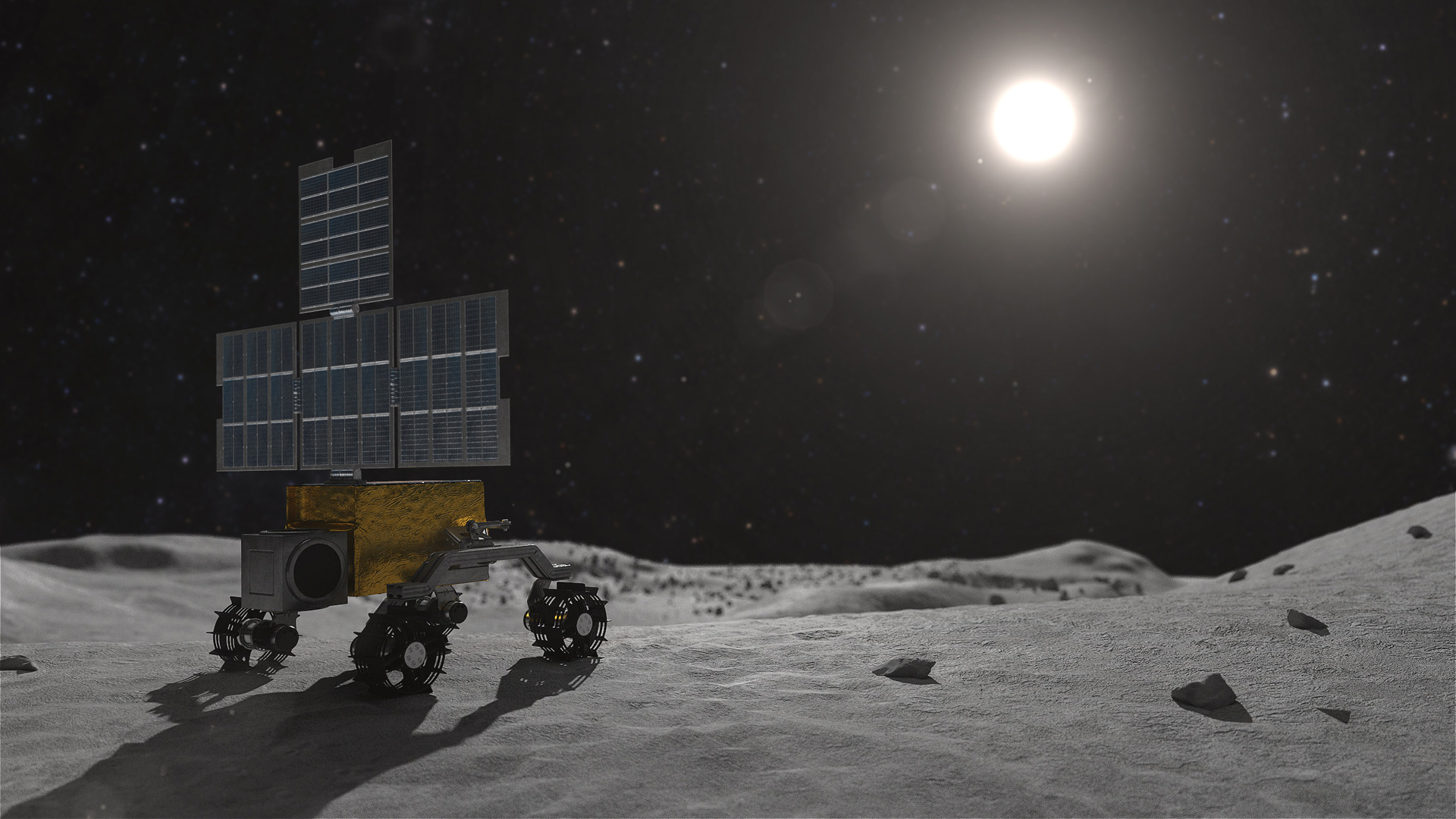'Power tower' rover to land on the moon by 2025
The rover would wirelessly charge robots exploring shaded lunar craters.

A "charger" rover that could supply power to robots exploring shaded craters on the moon's south pole will join expanding lunar infrastructure by 2025.
The world's space agencies have grand plans for the exploration of the moon performed by robots and humans alike. By the end of this decade, a space station will orbit Earth's natural satellite and a permanent base station near the moon's south pole will be built shortly thereafter, if all goes according to plan
The permanently shadowed craters in the south pole's vicinity are of particular interest to scientists as their unspoiled interiors may contain evidence of the solar system's past.
But since the sun's rays never reach inside those craters, any rovers exploring them will have to rely on the limited power of their onboard batteries. To help provide a steady source of power for these future lunar rovers, Toronto-based start-up STELLS SPACE plans to land a "power supplier" rover on the moon by 2025 that could beam power into the craters for the robotic scientists to recharge.
Related: NASA maps objectives to guide 'moon to Mars' space exploration
"It is widely evident that survival on the lunar surface is difficult due to the severeness of the environmental conditions," STELLS said in an emailed statement. "All the upcoming missions to the moon face one large constraint, power. At STELLS, we took that idea of having a wall plug and began looking at how we already do the everyday business of charging devices here on Earth."
The rover would place a "charging cube" inside the crater, then park on the crater's edge and spread its solar panels against the sun. It would transmit the produced electricity via a cable to the charging cube inside the crater where the exploration rovers could wirelessly connect to it and get the "juice" they need.
Get the Space.com Newsletter
Breaking space news, the latest updates on rocket launches, skywatching events and more!
"The Mobile Power Rover 1 (MPR-1) will charge other lunar exploration participants who install STELLS' lightweight wireless receiving coil or already have a third-party vendor coil," STELLS said in the statement. "This project aims to bring moon exploration a significant step towards the ultimate goal of a long-term presence on the moon."
The company plans to place the 66-pound (30 kilogram) rover to the moon's surface onboard Intuitive Machines' Nova-C lander by 2025.
Wireless charging, the company added, would work well in the vacuum of space. To increase reliability of the technology, the company is using components developed for Mars rovers, geostationary satellites and deep space probes.
Other private companies as well as space agencies are currently developing technology that would help set up a permanent infrastructure ecosystem on and around the moon for streamlined human and robotic exploration. For example, in 2020, NASA awarded a contract to Finnish telecoms company NOKIA to set up an LTE/4G communications system on the moon. pH Matters of Columbus, Ohio, received funding to develop regenerative fuel cells capable of producing power and storing energy on the lunar surface, and the Sierra Nevada Corporation of Madison, Wisconsin, is working on demonstration-scale hardware that uses methane and concentrated solar energy to extract oxygen from lunar regolith. The European Space Agency, meanwhile, is spearheading the development of a lunar satellite navigation system that will extend the reach of GPS satellites to the moon.
Follow Tereza Pultarova on Twitter @TerezaPultarova. Follow us on Twitter @Spacedotcom and on Facebook.
Join our Space Forums to keep talking space on the latest missions, night sky and more! And if you have a news tip, correction or comment, let us know at: community@space.com.

Tereza is a London-based science and technology journalist, aspiring fiction writer and amateur gymnast. Originally from Prague, the Czech Republic, she spent the first seven years of her career working as a reporter, script-writer and presenter for various TV programmes of the Czech Public Service Television. She later took a career break to pursue further education and added a Master's in Science from the International Space University, France, to her Bachelor's in Journalism and Master's in Cultural Anthropology from Prague's Charles University. She worked as a reporter at the Engineering and Technology magazine, freelanced for a range of publications including Live Science, Space.com, Professional Engineering, Via Satellite and Space News and served as a maternity cover science editor at the European Space Agency.









